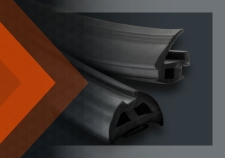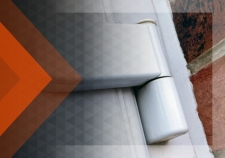
You usually find door closers on doors in public premises and commercial properties where heavy doors are installed. These doors come in many different shapes, sizes, materials and weights and therefore different door closers exist to function on these different applications. Here’s a short guide to help you understand how the different door closers operate and the types of door that will suitably require them.
Firstly, here's a definition list for some of the main functions performed by door closers. Different door closers are capable of some or all of these functions and with varying ability;
Adjustable Closing Speed: the ability to adjust how fast the door closes for the perfect speed.
Adjustable Latch Action: the ability to control how fast the door closes for the last few inches, allowing the door to fully close.
Delayed Action: the ability to adjust the delay of the door closing for an amount of time from maximum opening.
Back Check: prevents damage to doors and walls by offering resistance when the door is opened with excessive force.
Hold Open: allows the door to stay open at a certain angle, usually 90 or 105 degrees.
Overhead Closer
Also known as rack and pinion closers, overhead door closers are one of the most common closers out there. There are many variations of size, strength and ways to position the closer. You also have the choice of adjustable closing speed, latch action, delayed action and backcheck. Overhead door closers consist of a block body with an arm attached. Inside the body is a spring that is compressed as the door opens and released when the door closes.

Overhead Electromagnetic Closer
Electromagnetic door closers are often the most misunderstood door closer; this is due to a general misconception that it is filled with a lot of fancy electronics and that they are incredibly difficult to install.
These closers are just as easy to install as standard overhead door closers, but they have a little added extra. Originally designed with fire safety in mind, they add the function of ‘hold open’ to the door closer, but the magnetic solenoid coil and the little box attached allows the closer to be directly linked to the fire alarm and to release the doors when it goes off.

Overhead Slide Arm
Also known as cam action closers, slide arm closers were designed with the elderly, disabled and children in mind. Made for a smoother opening, these closers still maintain the features of a standard overhead door closer.
The main difference (other than the slide arm) is the heart-shaped cam that allows the door to be opened far easier as it reduces the force required to open the door and increases the closing force just before the door closes fully.

Surface Spring Closer
Surface spring door closers are designed as a smaller efficient way of automatically closing lighter doors without all the added extras and abilities of an overhead door closer.
These closers are fixed to the door frame and a wheel travels through the arm channel, the spring inside the body allows the door to close. Again, these are not suitable for fire doors as they are un-controlled.

Concealed
As the name suggests, a concealed door closer cannot be seen when the door is closed. This closer consists of a metal barrel and two metal plates that conceal the spring and chain mechanism. When the door is opened, the chain is pulled out of the barrel and compresses or extends the spring, this in turn causes the door to return to its normal state. In some cases, these closers work via a hydraulic function as opposed to a chain where fluid inside the closer helps with compression. These types of closers are classed as un-controlled door closers and therefore are not suitable for fire doors.

Floor Springs
A Floor Spring is a mechanical door closer, mainly used for glass doors where both a push and pull movement is required. Usually located in a cement box under the floor, this door closer consists of a heavy rectangle box with a cam spindle. An arm is attached to the spindle when fitted. When the door is opened it rotates the cam spindle and in turn the cam also rotates pulling the piston head. This causes the compression springs and oil inside to compress and store energy. When the door is released the stored energy provides the closing action of the door.

Transom Closer
Also known as concealed overhead door closers, these door closers are fitted into the frame or ‘transom’ of the door. These closers work in much the same way as floor springs with compression springs and oil to store the energy needed to close the door. These closers are mainly used for glass or aluminium doors.

To view our full range of available door closers, please visit our Door Closers category by clicking here. Here you’ll find over 60 different door closers.





